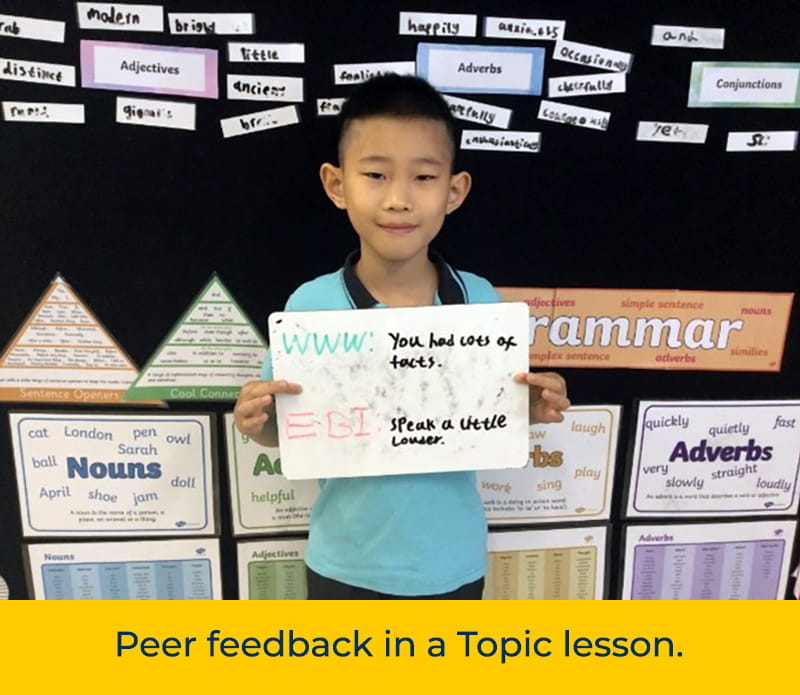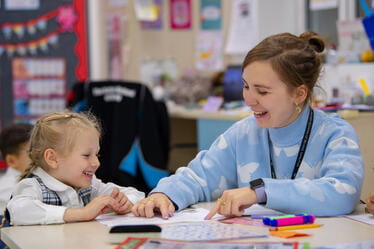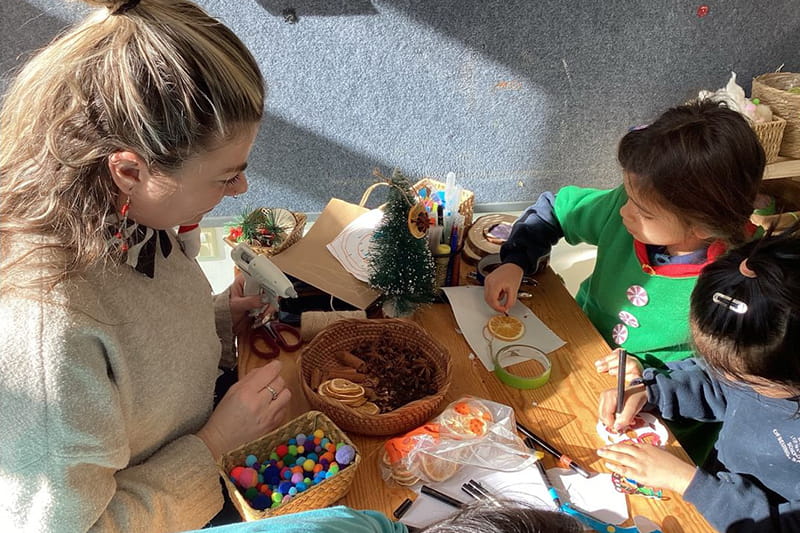Student feedback is an important area of development in Year 2. Over the school year, students will learn to process, action, and give feedback in different contexts. Traditional ‘marking’ has come a long way over the last few decades, and the methods that we use at BSB ensures that all students have the opportunity to take their work to the next level. In Year 2, a strong foundation is set where students develop self-awareness skills and techniques to deliver and receive positive criticism. These skills help students’ own learning process and will follow them throughout their school life with the complexity of these skills developing year by year.
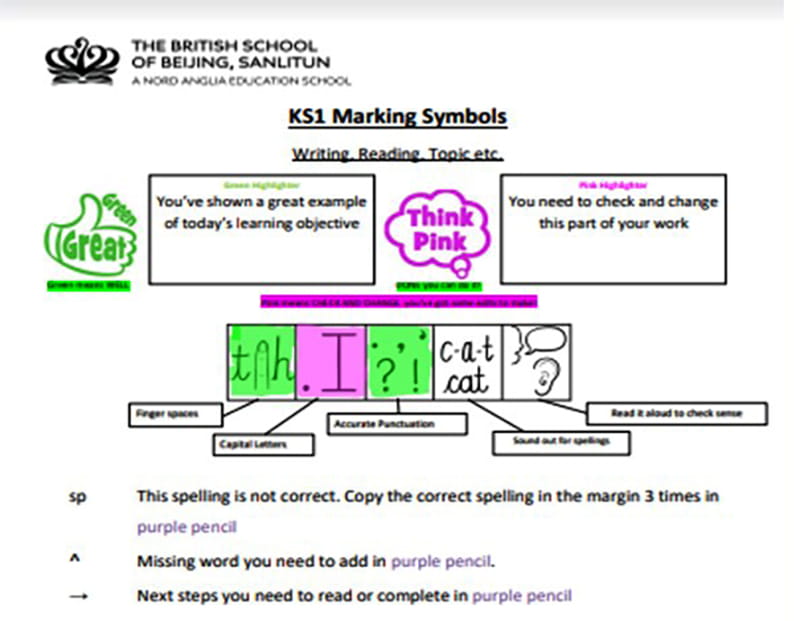
Feedback in the context of English Lessons
To look at feedback as it is given in English lessons allows for a good overall view of the feedback process and its benefits. When a student finishes a piece of writing (whether this be big or small), teachers will read through the work and check this against the criteria of the task. The picture below shows an example of a writing task along with the criteria:
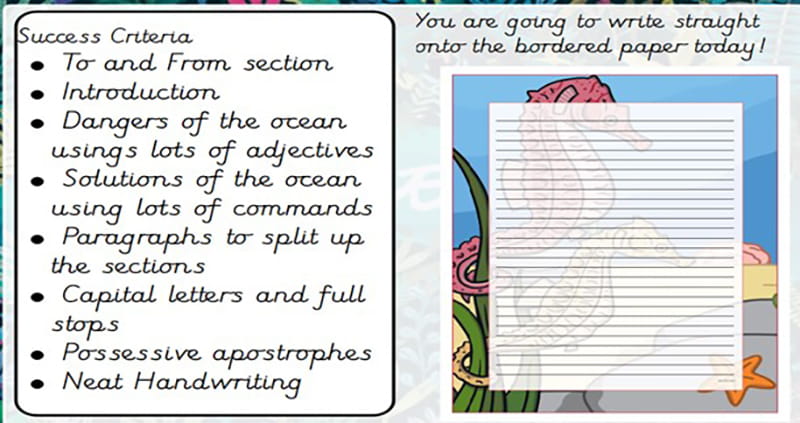
It is important that students receive positive feedback for their work before going on to improve it. At BSB, we use the colour green to signify success, and teachers will highlight areas of the work that have met specific criteria of the task. The colour pink is used to alert students to parts of the work that need attention. In terms of content, structure and quality, teachers will choose a single piece of criteria that a student may have missed in the original composition. This means that the student has a manageable, specific target when responding to their feedback. For grammar and punctuation, we allude to the mistake by highlighting areas in pink that need attention, but we do not explicitly say what the issue is. This has the effect of making students think deeply about errors or repeated mistakes. Students then correct these mistakes using purple pencil so that the nature of specific difficulties are clear to teachers when checking feedback that has been actioned. Feedback can be carried out in the same lesson or in specific feedback sessions. This is an example of a student’s book with teacher feedback in green and pink and the student’s responses in purple:
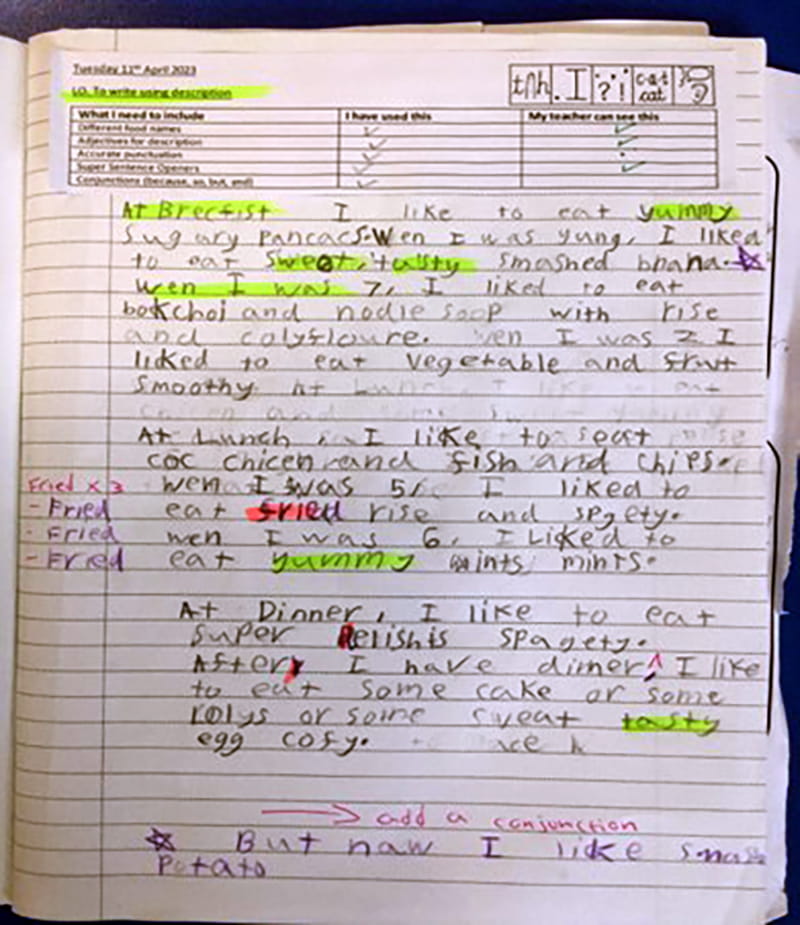
Student-to-Student Feedback
The above example pertains to teacher-to-student feedback. However, peer feedback is very useful to allow students to develop and hone their critical, communication and diplomacy skills. Students first choose something that they liked about their classmate’s work, then advise on potential ways that it could be improved. Students will often use checklists to help them carry out peer feedback activities as this helps to structure the process. Peer feedback has the positive effect of consolidating that each student’s opinion is not only important but also useful. This is an example of a student-to-student feedback activity:
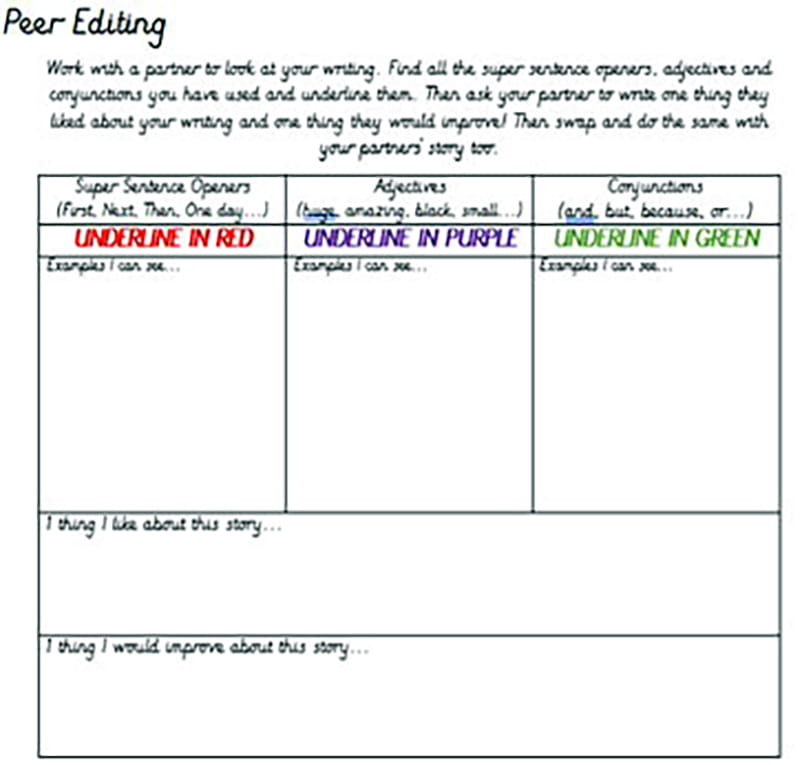
Feedback across the Curriculum
The above example of the feedback process pertains to literacy. However, feedback is an important tool in all school subjects, as well as with behaviour expectations. In classes like Topic, where tasks are more hands-on and less dependent on written work, students will often use the WWW (What went well) and EBI (Even better if) method to help them formulate and structure feedback. This requires students to give verbal feedback to each to support classmates’ development and learning. This is an example of recent feedback from a student in the Giraffes to a classmate who had just given a verbal presentation: WWW: You spoke clearly and we could hear everything. EBI: You add pictures to your presentation. Regarding behaviour, teachers will often follow a similar method, praising the student’s positives and successes, then outlining unacceptable behaviour and a plan of action.
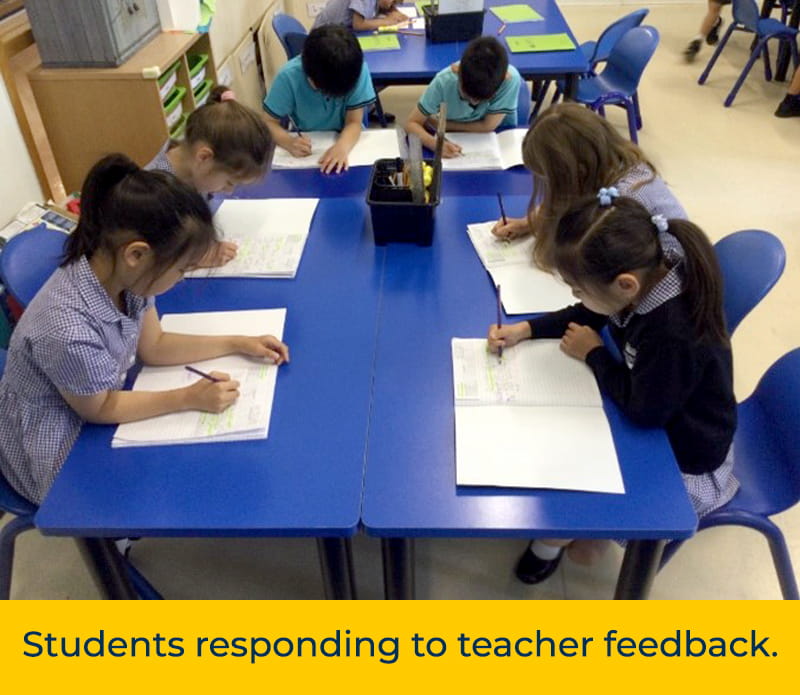
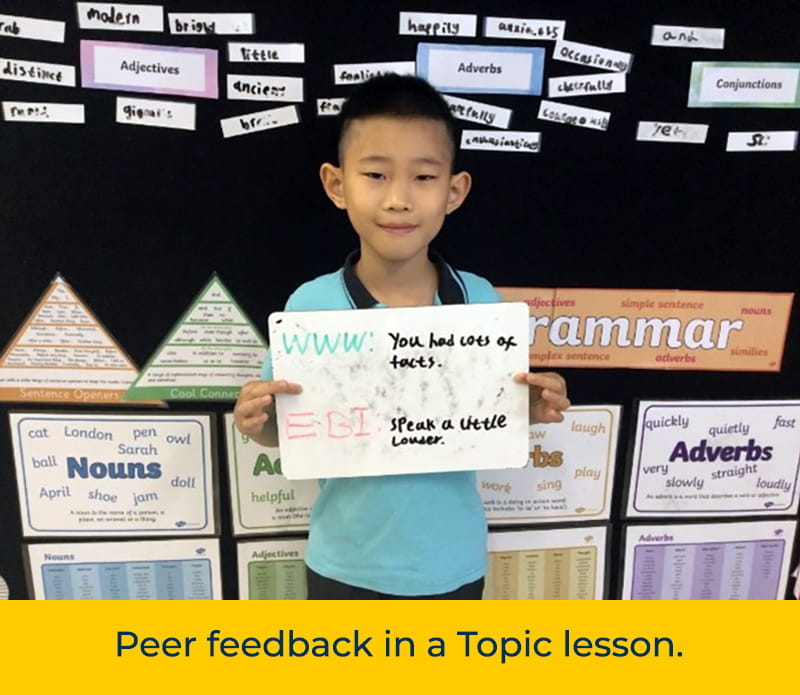
How to support your child with feedback at home?
Giving appropriate feedback is a skill, and it takes practice. Many parents understandably become frustrated when trying to support their children with both academic and non-academic pursuits. It can be very easy to lose patience and give over to frustration if your child is not able to succeed in something that you may deem as easy or straightforward. A frustrated parent and overwhelmed child are not conducive to meaningful learning. However, delivered the correct way, the benefits of feedback are bountiful. Below is an excellent blog that advises parents on how to integrate healthy and productive feedback at home. This could be used for helping your child with their homework, reading or even non-academic pursuits.
https://biglifejournal.com/blogs/blog/give-effective-feedback-child
By James Behzadi
Year 2 Giraffes Teacher

